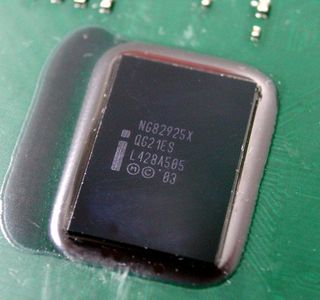Intel's 925XE: Does Beating the 1 GHz FSB Barrier Matter?
New Chipset: 925XE With FSB1066

Alderwood and Alderwood: 925X and 925XE are technically on a par, but validated in a different manner.
The Pentium 4 Extreme Edition will be the first processor to work with a system bus quad-pumped to 266 MHz. While the launch of the 600 series of the Pentium 4 towards the end of the year is expected only to produce an increase in the L2 cache from 1 to 2 MB, a 700 series may finally also find room for FSB1066.
Regardless of the CPU used, the customer no longer has the choice between the cheaper 915P chipset and its grander sounding cousin the 925X, which is only a whisker faster. Only the 925XE supports the faster FSB clock. The higher speed is gained relatively simply through selection, so both variants benefit from new steppings.
A further, equally important advantage of the 925XE is its ability to operate DDR2 memory at 333 MHz (DDR2-667). It is still unclear whether the 925XE will support this memory speed officially, or whether the feature will be available but unvalidated (as was the 845 chipset's support for DDR333 in its day).
4 GHz In Sight?
As the clock increases envisioned by the Intel roadmap were further deferred into the future in the middle of this year, we do not expect the emergence of 4 GHz processors in 2004. The existing performance-enhancing options are simply too numerous: FSB1066, faster DDR2 memory (667), and more cache for the Pentium 4 600 processor. Enough evidence speaks against it in any case: the power loss on the Prescott processor core is known to be excessive. While the integration of Enhanced Speedstep may alleviate the problem, it will not solve it. At full load, the fast CPUs continue to burn up oodles of energy that must be carried off by loud and expensive cooling solutions.
Stay on the Cutting Edge
Join the experts who read Tom's Hardware for the inside track on enthusiast PC tech news — and have for over 25 years. We'll send breaking news and in-depth reviews of CPUs, GPUs, AI, maker hardware and more straight to your inbox.
Current page: New Chipset: 925XE With FSB1066
Prev Page 3.46 GHz Pentium 4 Extreme Edition Next Page BIOS ScreenshotsMost Popular

